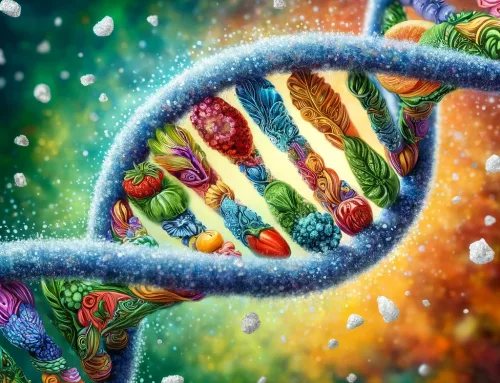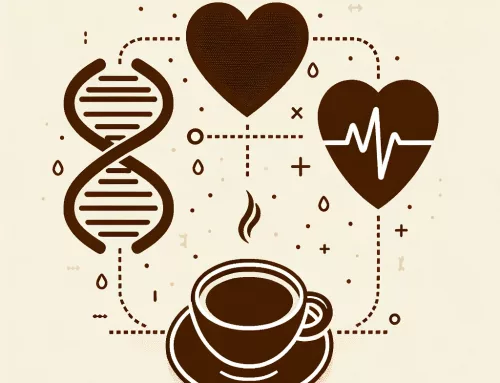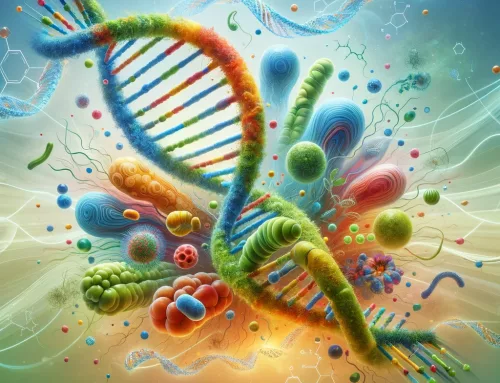Introduction
In an era where one-size-fits-all dietary advice is becoming a thing of the past, gene-based personalised nutrition is becoming, alongside other personalised nutrition approaches, more popular. This concept utilises DNA testing to tailor dietary recommendations to individual genetic profiles. However, understanding your genetic make-up is just the beginning. The real challenge lies in changing your daily habits to align with this personalised advice. That’s where habit formation becomes crucial to enable a sustained behaviour change.
The Role of DNA in Personalised Nutrition
Genetic testing in nutrition opens up new avenues for understanding our bodies. It reveals unique insights about how we process different foods or our susceptibility to certain health conditions. This information is valuable, as it allows nutritionists to provide advice that’s not just generalised, but specifically tailored to our genetic blueprint. Imagine receiving dietary recommendations that are optimised to your body’s needs – that’s the beauty of personalised nutrition.
The Need for Behaviour Change
Adopting new dietary habits, especially those that may significantly differ from your current lifestyle, can be daunting. It’s one thing to know that you should eat certain foods based on your DNA test results; it’s entirely another to consistently make those choices. This gap between knowledge and action is where behaviour change becomes essential. To effectively implement and maintain these personalised dietary changes, we need to cultivate new habits, and that’s where resources such as the “Atomic Habits” book offer useful guidance.
Applying “Atomic Habits” to Personalised Nutrition
Make It Obvious: If your DNA suggests a need for more leafy greens, place a bowl of fresh salad front and center in your fridge. This visual cue aligns your environment with your nutritional goals.
Make It Attractive: Combine healthy eating with activities you love. If music uplifts you, turn meal prep into a dance party in your kitchen.
Make It Easy: Create a meal plan that aligns with your genetic dietary recommendations. Prepping meals ahead of time reduces daily decision fatigue and makes healthy choices more accessible.
Make It Satisfying: Use a health app to track your meals and progress. Watching your health improve over time can be a powerful motivator to stick to your genetic diet plan.
Real-Life Application
Sarah, a 35-year-old marketing manager, always found it challenging to manage her weight. Her busy lifestyle led her to rely on quick, often high fat, salt or sugar food options. After a DNA test revealed she would benefit from frequent cardio training, a higher protein diet, and that she had a “sweet tooth”, she knew she needed a tailored approach.
Initial Steps: Sarah began by making small dietary changes, such as replacing sweets with healthier alternatives like nuts and fruits. She also started including more protein-rich foods in her meals, as recommended by her nutritionist based on her DNA analysis.
Behavior Change Techniques:
Habit Stacking: Sarah linked her new dietary habits with existing routines. For instance, after brushing her teeth in the morning, she prepared a smoothie, ensuring she started her day with a nutritious choice.
Environment Design: She rearranged her kitchen, placing healthy foods at eye level and storing less healthy options out of immediate sight. This helped make the healthier choice the easier choice.
Accountability: Sarah partnered with a friend who also aimed to improve her diet. They shared weekly meal plans and encouraged each other, providing mutual support and accountability.
Rewarding Healthy Choices: Each time Sarah chose a healthier option over a sugary snack, she rewarded herself with a non-food treat, like a relaxing bath or reading her favourite book to wind down. This ‘Make It Satisfying’ approach helped reinforce her healthy choices.
Reflecting and Adjusting:
Over time, Sarah learned to adapt her strategy. For example, if she noticed certain healthy foods didn’t satisfy her, she experimented with new recipes or swapped them for similar, more palatable options.
Outcomes:
After several months, Sarah not only saw a significant improvement in her weight but also experienced higher energy levels and better overall health. More importantly, these changes became a natural part of her life, not just a short-term diet.
Conclusion
Personalised nutrition based on DNA testing offers a promising path to better health, but its success largely depends on our ability to adapt our habits. By applying some of the principles from “Atomic Habits,” we can make these changes more achievable and enjoyable. Whether you’ve already undergone genetic testing or are considering it, remember that the journey to better health is not just about what you eat, but how you build the habits around your diet.
Behaviour change techniques mentioned here are from the “Atomic Habits” book by James Clear









Leave A Comment